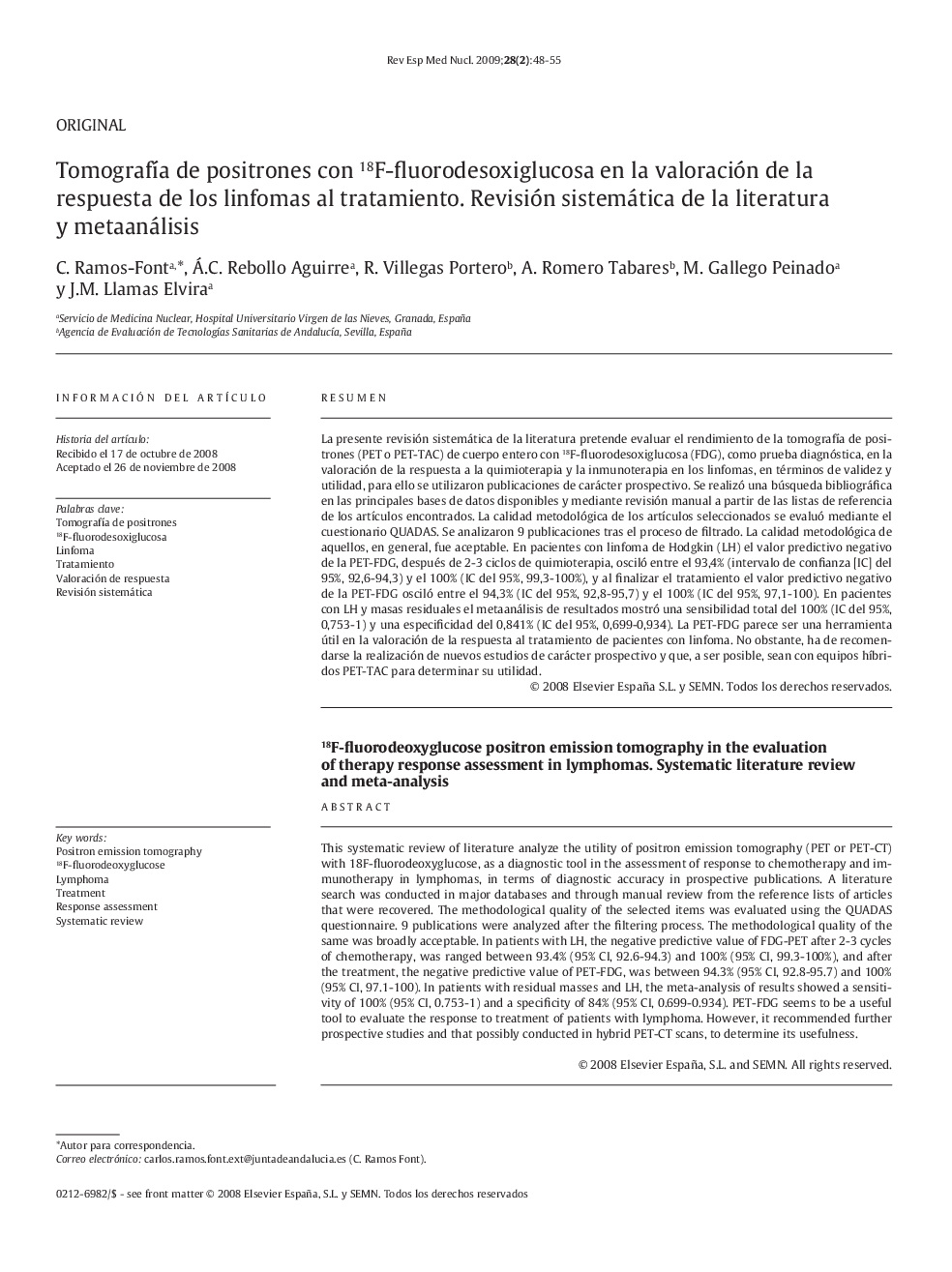| Article ID | Journal | Published Year | Pages | File Type |
|---|---|---|---|---|
| 4249087 | Revista Española de Medicina Nuclear | 2009 | 8 Pages |
Abstract
This systematic review of literature analyze the utility of positron emission tomography (PET or PET-CT) with 18F-fluorodeoxyglucose, as a diagnostic tool in the assessment of response to chemotherapy and immunotherapy in lymphomas, in terms of diagnostic accuracy in prospective publications. A literature search was conducted in major databases and through manual review from the reference lists of articles that were recovered. The methodological quality of the selected items was evaluated using the QUADAS questionnaire. 9 publications were analyzed after the filtering process. The methodological quality of the same was broadly acceptable. In patients with LH, the negative predictive value of FDG-PET after 2-3 cycles of chemotherapy, was ranged between 93.4% (95% CI, 92.6-94.3) and 100% (95% CI, 99.3-100%), and after the treatment, the negative predictive value of PET-FDG, was between 94.3% (95% CI, 92.8-95.7) and 100% (95% CI, 97.1-100). In patients with residual masses and LH, the meta-analysis of results showed a sensitivity of 100% (95% CI, 0.753-1) and a specificity of 84% (95% CI, 0.699-0.934). PET-FDG seems to be a useful tool to evaluate the response to treatment of patients with lymphoma. However, it recommended further prospective studies and that possibly conducted in hybrid PET-CT scans, to determine its usefulness.
Keywords
Related Topics
Health Sciences
Medicine and Dentistry
Radiology and Imaging
Authors
C. Ramos-Font, Á.C. Rebollo Aguirre, R. Villegas Portero, A. Romero Tabares, M. Gallego Peinado, J.M. Llamas Elvira,
